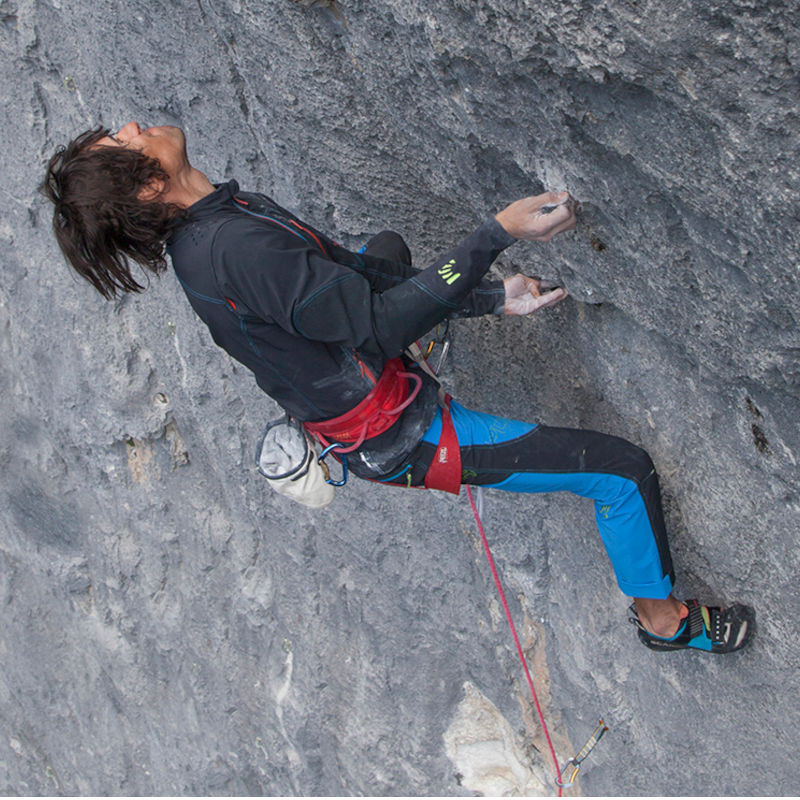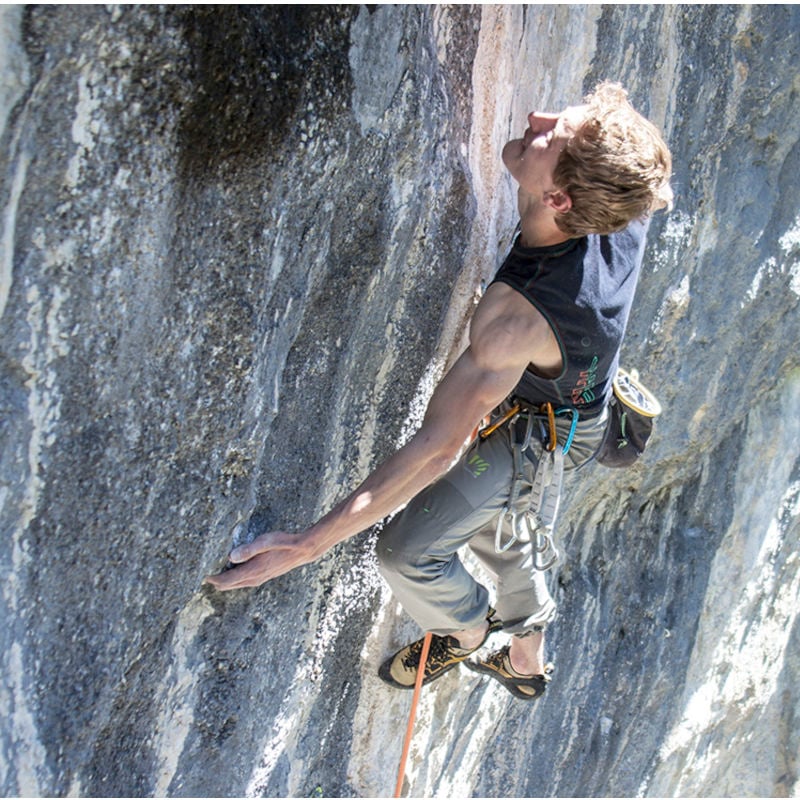I’ve always been impressed by those rock dolmens that appear at the foot of Monte Migogn, among the big larches and the green meadows of the village of Laste. I would point at them when I was small, and my parents never tired of telling me about the legends of these magical places. I made them repeat the stories so many times that at night I dreamed of climbing up those smooth rocks and finding the treasure of the legend.
I wasn’t walking yet when I went up the first time, on my father’s shoulders, to the Pian di Stelle bivouac, and when I got older I kept asking to go up there, to the bivouac of the elves.
I liked climbing the via ferrata that led to that unusual structure, but I looked admiringly at those shiny “things” that I saw in the middle of the slabs; it impressed me to think that people could climb up those smooth rock surfaces using only their hands and feet.
Many years later I returned to these giant rocks armed with ropes, quick draws and climbing shoes. By now I called the shiny anchors by their names, and the rock no longer seemed so smooth; I began to glimpse small cracks and tiny holds.
Every time I climb these walls I feel a bit of magic, reawakening the memories of when I was a child – the legend of the castle’s treasure, the hope of finding it ... and every time I reach the belay, touching the chain is like touching a little treasure. I never thought I could climb these rock faces, much less still get so excited when, returning to the parking lot, I see the massive Civetta illuminated.
Climbing here means absorbing the magic of these places, and I hope that everyone, acting responsibly, will find their own treasure among those rocks, and that in the evening, sitting on the bench in Ronch before going down to the valley, they will be able to feast their eyes and fill their heart with the most beautiful sunset in the world.
Laste is considered a summer crag, but its south-facing walls are pleasant to climb even in the spring and fall, and on the Sasso della Murada the temperature is often good even on clear winter days.
The crag is composed of four huge boulders, reaching as high as a hundred meters in some places. The four main sectors are Sass de Rocia, Sass de la Murada, Sass de la Gusela and Sass de L’Aghinel. The walls are generally vertical and offer smooth and compact limestone, similar to that of the Marmolada. The climbing can be considered perhaps a little old-fashioned and requires careful use of the feet and great finger strength, but those who can read this rock are guaranteed to find great satisfaction and the opportunity to climb some of the most beautiful pitches in the Dolomites.

The recommended routes:
Pippo alla Tavola Rotonda (6b)
La Mota che Smota (6b+)
Articulation (6c+)
Level Group (7a+)
Atto Rifatto and Zepping (7b+)
La Nera (7c+)
Perfetta and Laste Rock (8a)
And for the most expert, the two MUST-CLIMB pitches of the crag:
Un Attimo and Lo Schiaccialiste del Pelstein (8b+)
experience by
SARA AVOSCAN AND OMAR GENIUN

